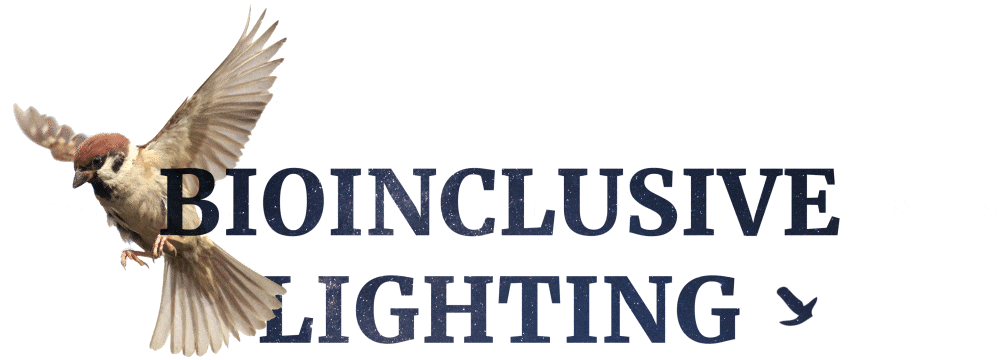
Light for people, in balance with the ecosystem.
Lighting is essential to humans. It extends the day, helps us navigate, and provides us with a sense of security. However, it also affects biodiversity, contributes to light pollution, and can have an adverse impact on human health. The idea behind Bioinclusive Lighting is to create lighting solutions that meet people’s need for light, in balance with the ecosystem - for a more sustainable future.
How are we affected by poor lighting?
Light pollution constitutes all unnecessary and excessive use of electric light. As public, commercial, and private outdoor environments are illuminated even during the dark hours of the day, the amount of illuminated space is increasing globally at a rapid pace.
People’s health
Light pollution can have direct and indirect effects on people’s well-being. Light shining into bedrooms, for example, can be perceived as disturbing, which in turn can create irritation and sleep disruptions.
Waste of energy
Any light that is not used properly is unnecessary and a waste of energy. Just as we turn off the lights when we leave a room, we should also make sure that outdoor lighting is turned off or dimmed when no people are around.

Night sky
About 80 percent of the world’s population cannot see a starry night sky. The reason is ‘skyglow’, which is caused by artificial light shining into the sky. The phenomenon is difficult to measure, but like other light pollution, it can have negative effects on humans, animals, and the environment.
Impact on animals and ecosystem
Animals use light to orient themselves, find food, avoid predators, and communicate. Most species are sensitive to blue light and the lower wavelengths of light (below 500 nm). It affects behaviours and can impact the availability of natural habitats and food, leading to impaired survival and reproduction. By limiting the proportion of light in lower wavelengths, the negative impact on the ecosystem is reduced.
Future solutions – for people and wildlife
Bioinclusive Lighting involves providing light that is good for people’s well-being and urban development – but with as little impact on biodiversity as possible. As a lighting supplier, we are aware that we contribute to the increase in the amount of light. That is why we can also be part of the solution. We follow the research and guiding standards, and we listen to those who know more than we do. At the same time, we want to be one step ahead. We participate in studies and research projects, and we collaborate with a number of operators in order to jointly identify future solutions.
Good light – how do we include the environment?
With Bioinclusive Lighting, we include the environmental aspects in planning outdoor lighting solutions and explore how we can minimise the impact on the ecosystem. The essence of responsible lighting is ensuring the right light, in the right place, at the right time.
In the video, Henrik Sandqvist, Product and Application Manager for Outdoor, tells us more about how Fagerhult works to create good lighting environments – for both people and the ecosystem.
The right light
All light should have a clear purpose. Before installing or replacing permanent lighting, the following should be asked: Is this lighting needed, and is it the right amount? How will it affect the surroundings, the environment, and wildlife? The right light also includes factors such as colour temperature, wavelength distribution, colour rendering, and light levels.
Make sure...
...to choose the warmest possible colour temperature.
...to limit light in the lower wavelengths (below 500nm).
...that the light is no brighter than necessary.
The right place
To avoid light pollution and unnecessary energy consumption, it is important that the light is directed where it is needed. We develop and offer different light distributions optimised to direct the light to the right place.
The right time
People’s need for lighting varies over the course of the day and according to the activities of a place. The light should be used only when it meets these requirements. With adaptive lighting, both the intensity and spectral distribution of the light can be adjusted, and with time control or presence control, the light is activated at the right time.
The right lighting solution
Our products for outdoor lighting for Streets & Road are available with a wide range of luminous flux, optimised light distributions, and smart lighting control. They are developed to last for a long time, be resistant in any environment and creating good visual comfort where the lighting should be a positive experience – both for those who see the light from a distance and for those who are in the light.
Evolume
Evolume is a series of weather-resistant, post-mounted luminaires with high performance and good light comfort. The luminaire is now available with more options and colour temperatures (2700K, 2200K and PC Amber) as well as adaptive light. This allows the intensity, wavelength distribution, and light distribution to be adapted based on need, time, and presence - and good opportunities to take greater account of animals and nature.

Do you want to create future solutions for people and wildlife?
With Bioinclusive Lighting, we want to make it easier to choose wisely, view outdoor lighting from a broader perspective, and include the ecosystem in lighting planning. Get in touch with us and we’ll tell you more about how you can create a lighting solution that considers people, the night sky, and biodiversity. We look forward to hearing from you!